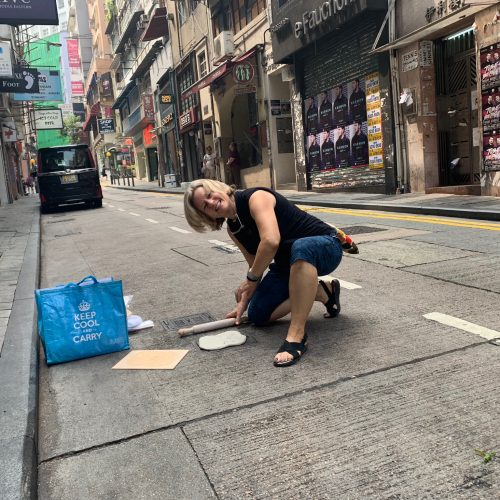
Student work: Helen Price
Level 1 Creative Arts student, Helen Price, has just finished Sculpture 1: Starting out in 3D, I wanted to ask Helen some questions to share her engaging work with you.
Helen, you have just completed Sculpture 1: Starting out in 3D, what did you enjoy most about this unit?
I loved this course! I was introduced to a variety of materials and how they can be used for artistic expression. The structure appeared to be fairly loose at first, but I soon learned that by experimenting with different materials, keeping an open mind, spending time on background research and engaging in a great deal of self-reflection, I was able to really discover what excites me.
When my tutor saw what sort of areas interested me, he pointed me in the direction of other artists working in a similar way which gave me great inspiration.
What was your favourite material to work in, and why?
Plaster casting has become my favourite medium. This was an interesting development, as I found my first experience with plaster to be totally frustrating, and produced what I considered to be poor outcomes. I commented in my learning log that if I never came across plaster again it would be too soon!
However, casting in plaster was then introduced in the course and I suddenly found a whole host of possibilities opening up. I was in France at the time and began taking clay impressions of manhole covers and then cast them in plaster. I became fascinated by the variety of covers and the design and patterns incorporated in them. This sparked a thought process around how these might differ in different countries and environments and what they might tell us about cultural differences.
For my next assignment, I developed this idea further and took impressions of manhole covers in China (where I currently live) as well as in Hong Kong, where I found them to be quite different. The older ones in Hong Kong told their own story and cultural history. Some were over 100 years old and were made in the UK with both Chinese and English writing on them.
I loved the fact that I could take an impression of something that is fixed and a part of the urban landscape and yet can be transported into our homes as a piece of art.
The casting method has limitless possibilities in terms of presenting the artwork in different ways which can augment the story I am trying to tell. I presented the Chinese manhole cover in a “mosaic” style made up of several different elements of manhole covers. I mounted it on a red background, the iconic colour of China, in a composition that reflects the Chinese design of a square hole in a middle of a circle, denoting their view that China is at the centre of the earth.
I arranged the plaster casts from Hong Kong in a tall vertical style, reminiscent of the skyscraper outline of the landscape there.
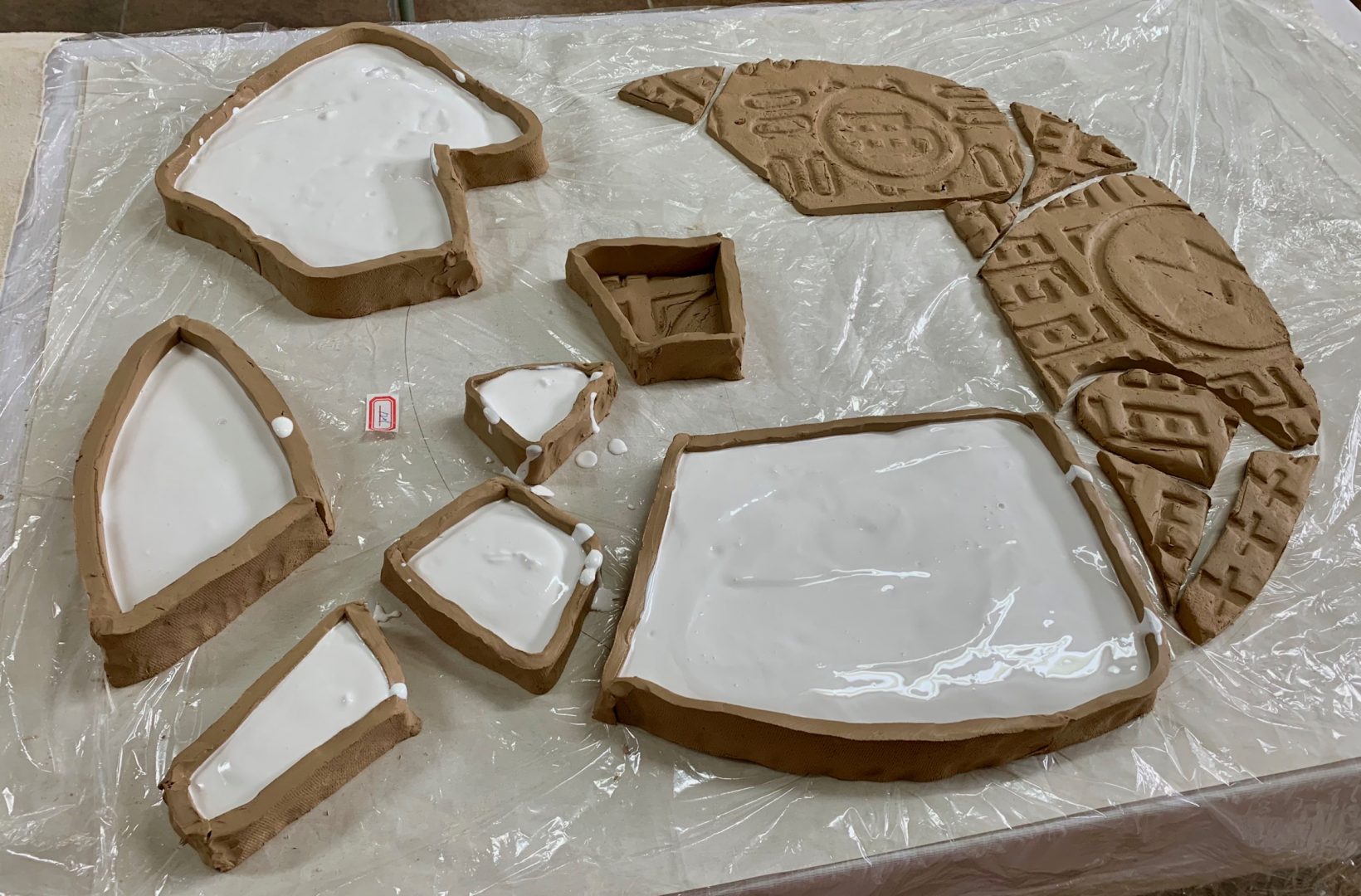
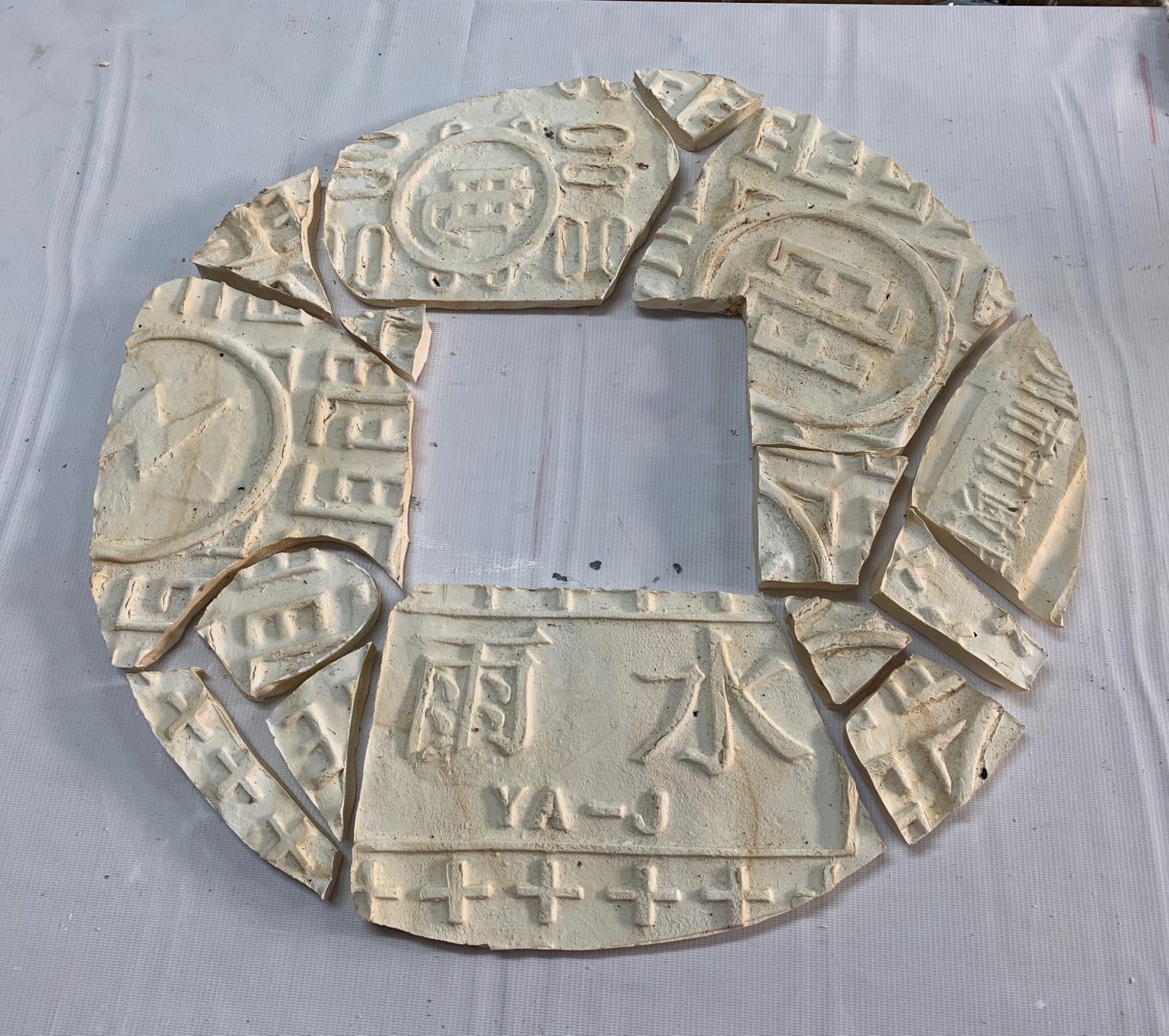
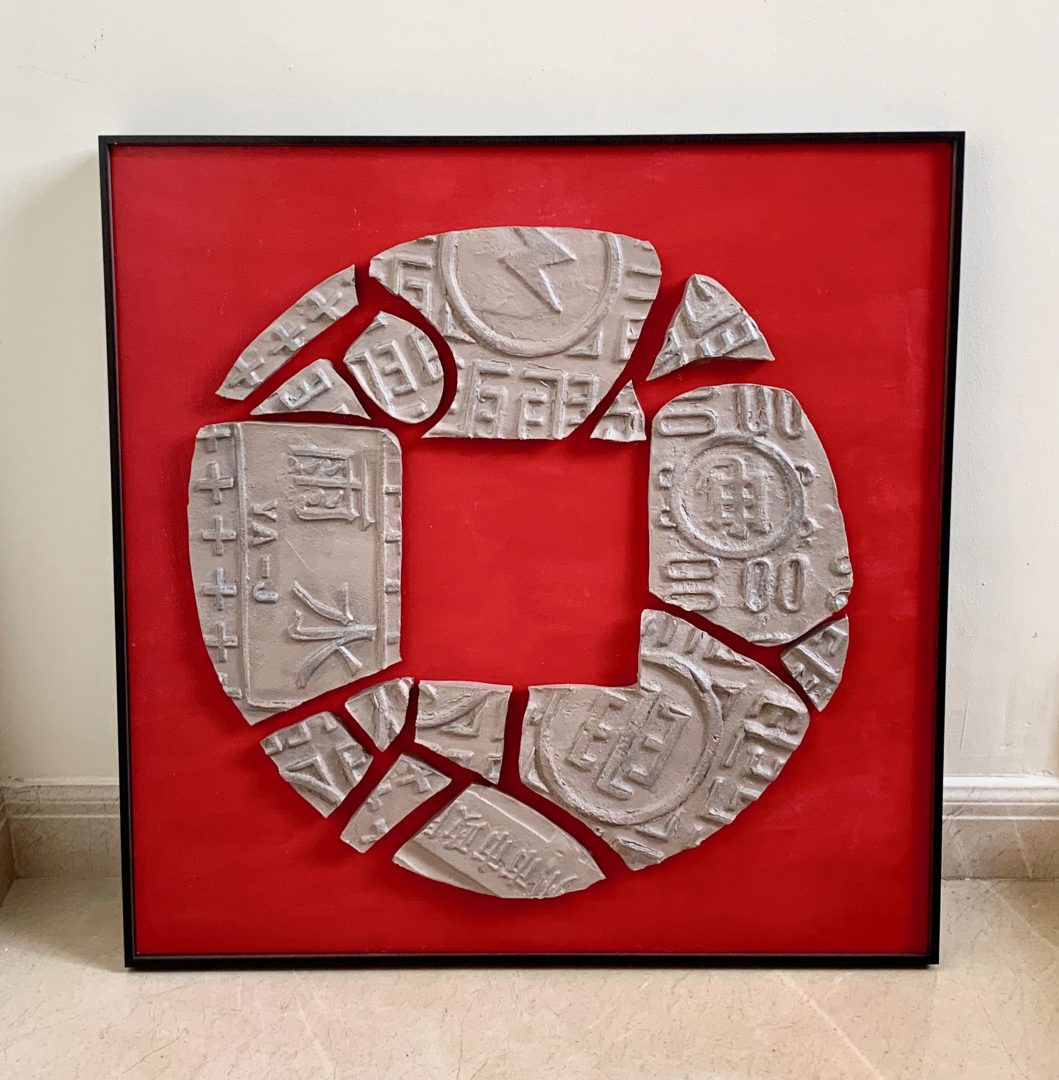
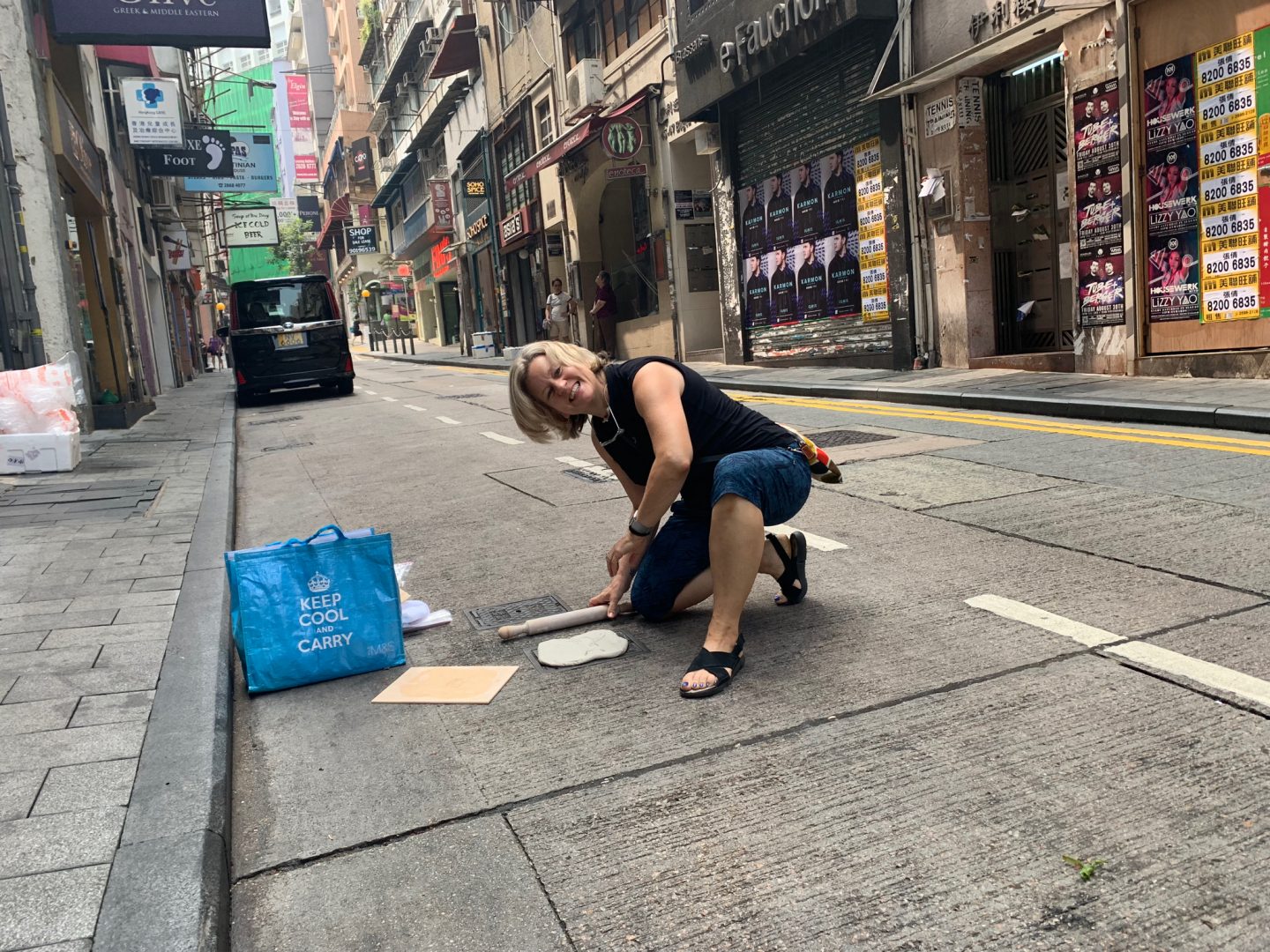
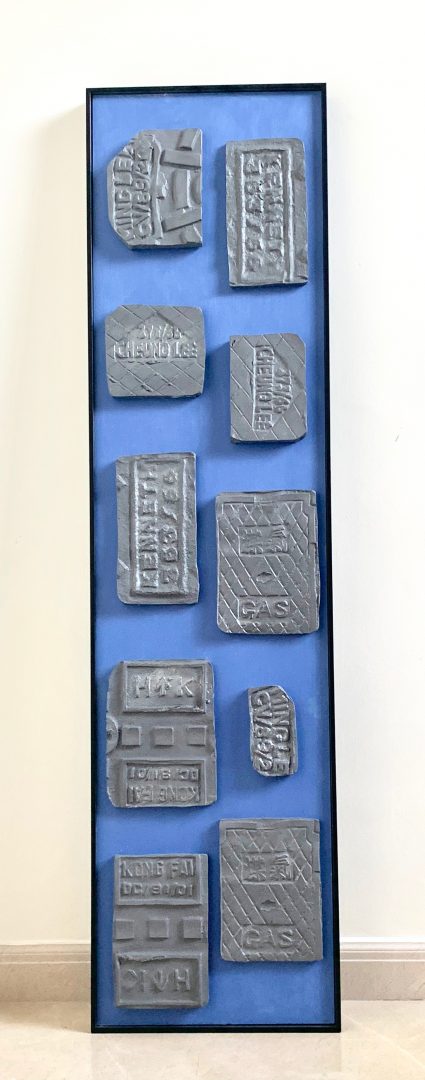
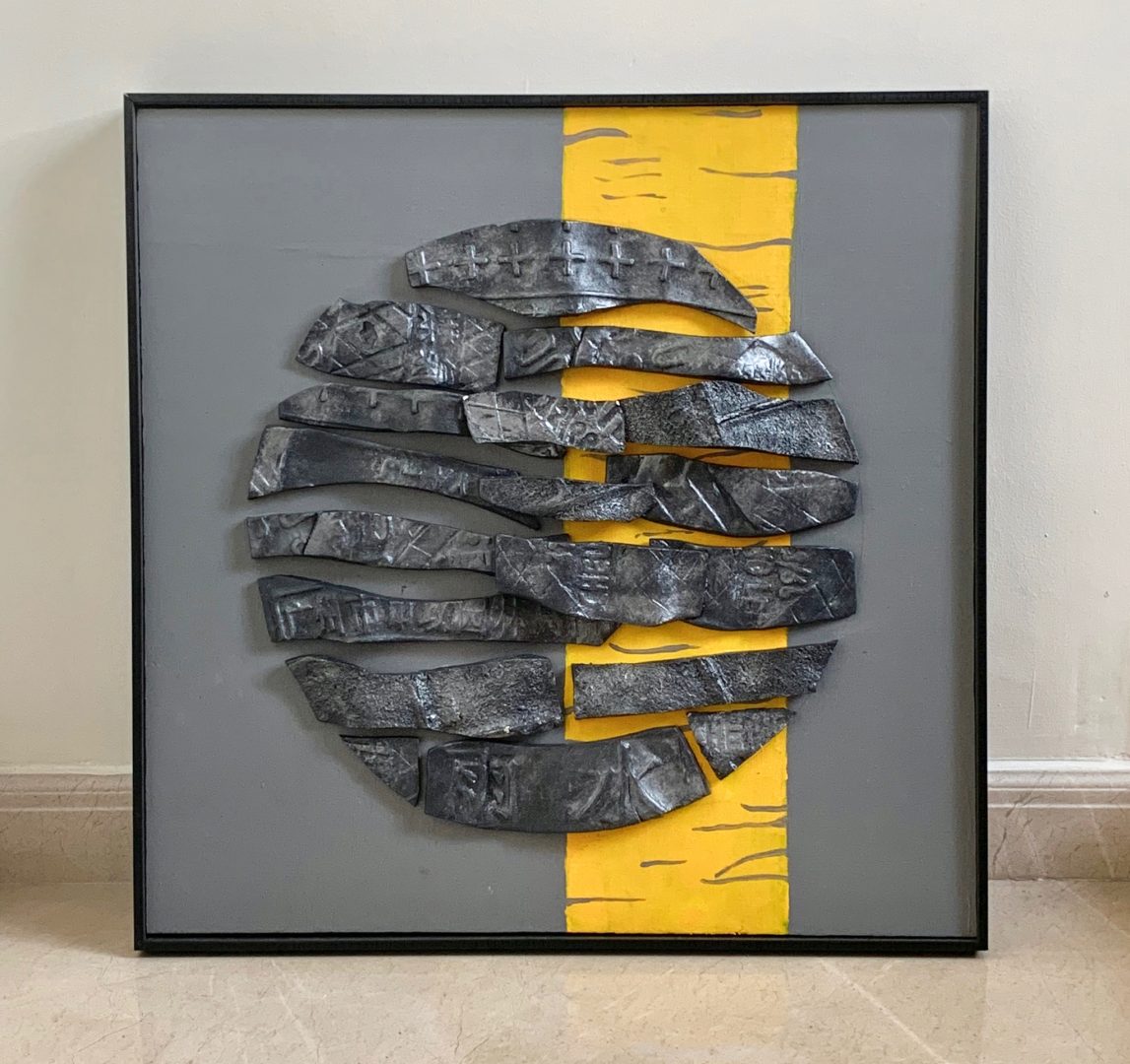
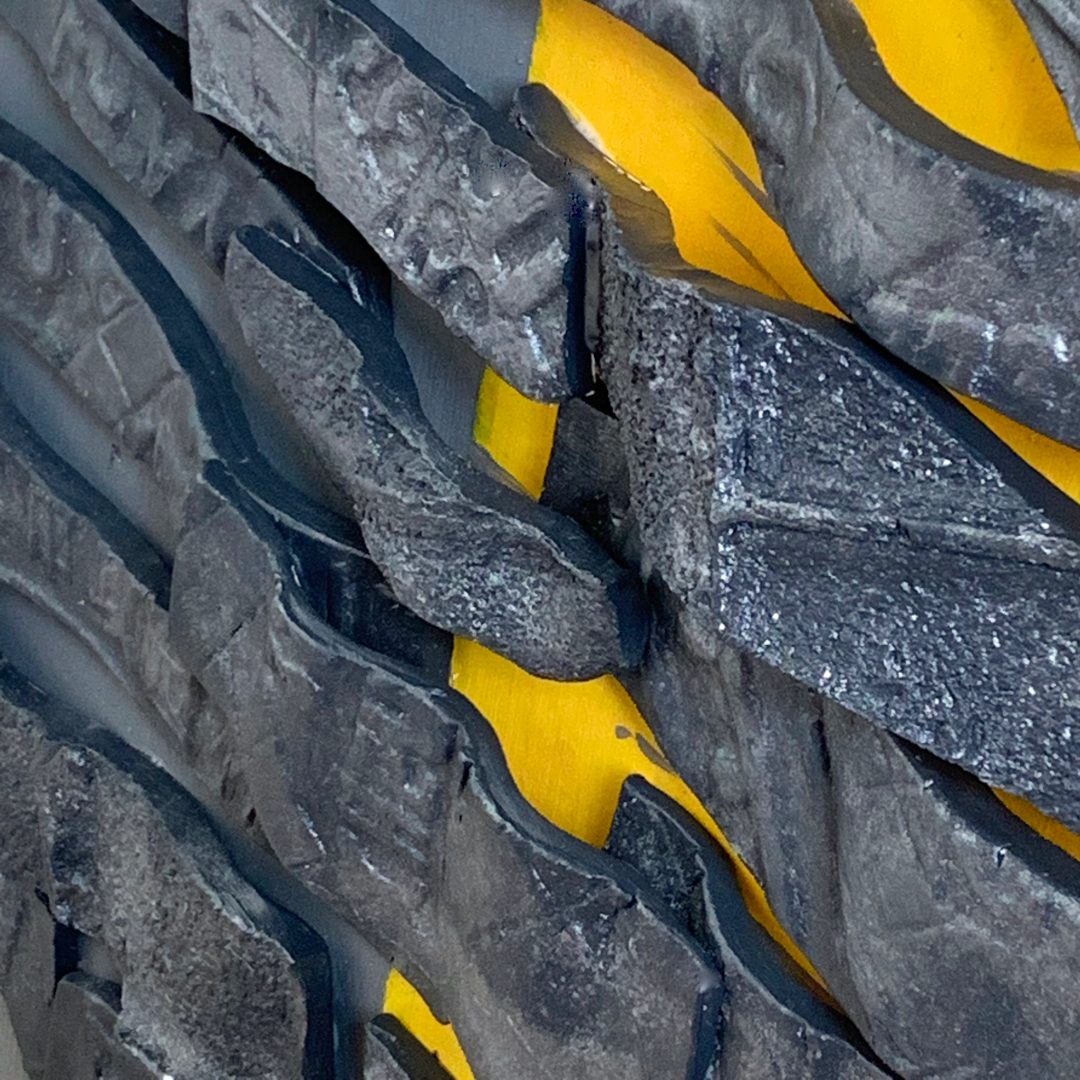
How do you think you might develop your use of sculpture in your next practical unit, are there any ideas that have stayed with you that might bring into your developing creative language?
I have decided to study photography as my next module and am already considering ways I might be able to combine sculpture and photography for level 3. I am exploring printing photographs on ceramic and utilising these parts in plaster sculptures. I think projects that combine plaster casts of aspects of the urban environment may work well with urban photography.
The Sculpture course has really awakened my interest in studying urban landscapes and what they tell us about different cultures and local history. I’ve been an expat for 25 years and lived in 8 different countries, and I’m fascinated by the different geographies in each place. If I’m walking down the street in China, it has sidewalks and roads and lamp posts just like many other streets, so how do I know I’m in China? What differences are there in the details of the urban design? The patterns, symbols and writing are often different and may point to historical differences as well as current priorities. It is these differences I am hoping to analyse and highlight through the mediums of Sculpture and Photography.
You have completed this unit after completing the core unit Creative Arts Today, what elements of CAT do you think supported your learning on sculpture 1?
I was not expecting to enjoy all aspects of the CAT course as it incorporated elements I thought I had no interest in whatsoever. However, I was pleasantly surprised to find I enjoyed all aspects of it, even the Creative Writing element, which was at the bottom of my list of interests.
I enjoyed the way that art history and context was interwoven throughout the course. As each unit was presented, different artists and works were introduced in a way that was relevant to the project at hand. I found this to be a refreshing approach, in contrast to a timeline-based introduction to the history of art. I finished the course feeling much more confident about some of the key artistic movements and artists, and felt I was beginning to have a context for the type of work I was interested in. These research and skills of analysis are used throughout all modules.
The course also taught research skills and critical reflection, which demanded a close examination of my own work and how I could place it in a wider context. I found practicing and becoming comfortable with this approach extremely valuable in my subsequent sculpture course. It demands that students think deeply about their own work.
Can you tell us a theme or particular artist that you have discovered that has inspired you the most?
Although not directly related to sculpture I was introduced to the work of David Hockney in CAT with particular reference to his photographic pieces. I became enthused by his work and read everything about him I could find. I am impressed by his ability to adapt to new technologies (his latest artworks involve iPad technology), and by his motivation to experiment despite his more advanced years. This ability to constantly explore and evolve is important for all artists.
In terms of my plaster cast sculptures, I had some inspiration from the Boyle family. They use a method that involves taking resin casts of random points in streets and use these to recreate an exact replica, painted and including the original dirt and gravel. The casts they take are chosen at random by asking visitors to throw darts at a map. This approach resonated with me as it is a way to depict different urban environments, perhaps between different countries, which may tell a story of cultural differences.
Who would you recommend this sculpture unit to?
I would recommend this unit to anyone who likes to “make stuff”! Personally, my drawing and painting skills are poor, but I do consider myself to be creative. I am much better at making things than drawing things. I was already familiar with clay, ceramic and glass (I am a mosaic artist) and have some experience working in wood, but this course was a great introduction to using a variety of different materials.
There is an emphasis on “seeing where the process takes you” and letting the materials lead the way. This encourages a freer, creative, artistic approach, and is really a lot of fun, although it sometimes gets a little messy!
All photographs copyright Helen Price 2019.
Blog post by Doug Burton Programme Leader Creative Arts and CA level 1 student, Helen Price
|
|







How very fascinating, the Chinese and Hong Kong manhole cover work! Odd in a way how the form factor reflects in the ancient coins and money formats!
Interesting to read! Greetings to China!
D.